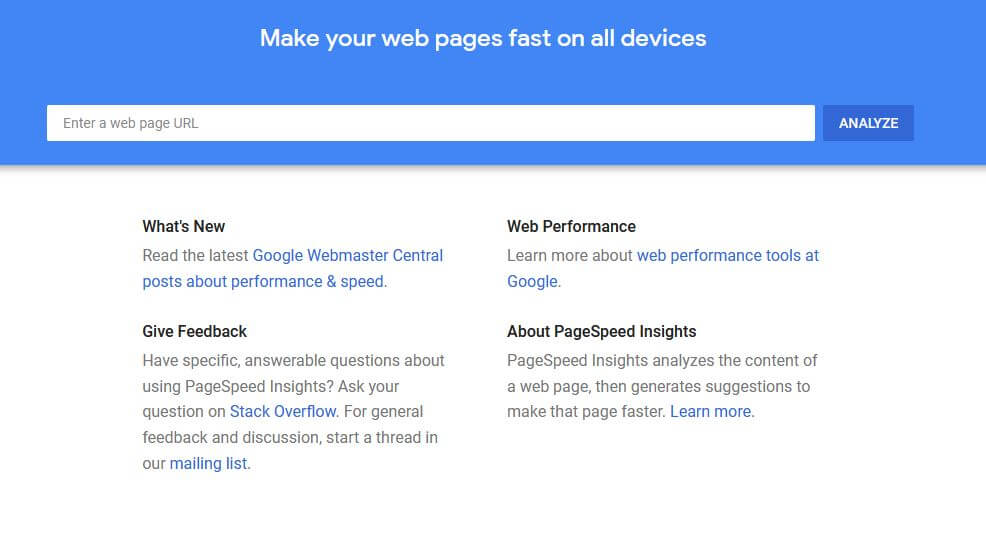In terms of preference, would you want to experience a slow-processing web page or a faster one? Either you’re desktop and mobile user, you would always choose a faster loading page!
It gives you ease, more time to read, find out answers, and lessens your stress level.
Sometimes, people would try to leave if a certain page doesn’t load for the next 10 seconds. This is why it’s important to know what PageSpeed is, how to optimize your page in terms of speed, and what tools can you use in order to get started.
But first, let’s get straight to the fact – What is Page Speed?
What is PageSpeed
Page Speed is the rate of how fast or slow does a webpage load.
There several factors contributing to page speed depending on the key feature of a page including:
● Unoptimized browser, app, and plugins
● A cheap and ineffective site server
● Bunch of paid advertisements,
● HD images with large file size,
● Dense Code
● Unnecessary widgets and features,
● And other embedded media.
It became an SEO Ranking Factor back in 2010 to give the users a positive experience visiting your website. In 2018, Google increases the importance of PageSpeed, especially for mobile users since its breakthrough for the last decade.

I mean try to compare the user’s experience in visiting a slow-processing website to a faster one? Which one can give more satisfaction?
We can imagine it as if someone went to your shop, and doesn’t get a fast transaction, down from the employees to its tools. Would it give them satisfaction to wait for your shop’s speed or even to come back again to purchase in some other time? I highly doubt that!
The same thing goes to your Webpage’s PageSpeed. A slow website can hurt your rankings. You can make use of the tool created by Google to test your page speed performance and help its performance in terms of optimization.
How Does PageSpeed Affect SEO
Today, there are two ways Google gives a score to your webpage. This is through Desktop and Mobile Result.
In terms of Customer Expectations and Site Performance, case studies show that at least
● 79% of dissatisfied customers would most likely to buy again
● 64% of smartphone (or mobile) users would expect a website to load within 4 seconds or less, and;
● 47% of online shoppers within webpages expects it to load for two seconds or less.
Desktop users tend to expect a faster PageSpeed considering a faster connection they use rather than the mobile users who can access any website with just a slow-data. For instance, your page spends at least 20-30 seconds of time to load. It would give an idea that there’s something wrong with your webpage (or website), and people would surely want to leave.
But if you want to start your page immediately, remove any element that can hinder it from loading faster. A significant amount of change in PageSpeed would increase the chance of users conversions.
But one thing most websites are neglecting is the fact that they’re focusing mostly on the scores and matrics when realistically, the real-life experience and reactions are far more important. This is why PageSpeed Insight wasn’t that useful before because it only shows the numbers or scores your webpage gets in terms of speed.

So try to figure out who your target audience is, and how they can access your site (whether through mobile data or fast internet connection), and combine tools PageSpeed tools with analytical tools to get a proper overview of the technical speed issues within your page.
Doing this with help ease the problem, give you a better view on how to optimize your page to give satisfaction to your visitors. PageSpeed basically makes people happy, and happier! You don’t want them to leave your page and never to return again.
When they enjoy your site, they can come back more often! Google will then see this as a good sign giving your page a higher ranking.
However, you should be able to identify that the faster the page loads, the lower the bounce rates are since most of the important key features are in the upper level of the page. But overall, it still gives significant change to your page results.
It’s hard to draw a conclusion from a single article experiment. But the effects of PageSpeed SEO would depend on different factors. With all the tests, experiments, and case studies run-through, PageSpeed does affect SEO Rankings. And it’s one of the most effective ways to increase traffic to your website.
In the end, PageSpeed is a direct ranking factor since Google’s algorithm speed update. But you also have to remember that the speed depends on time, not on scores. Now is the time to focus more on checking how your webpage does in terms of the amount of time a person has to wait for it to load, and the time a visitor spends in staying.
Do anything that can help you optimize your page for better customer experience!



